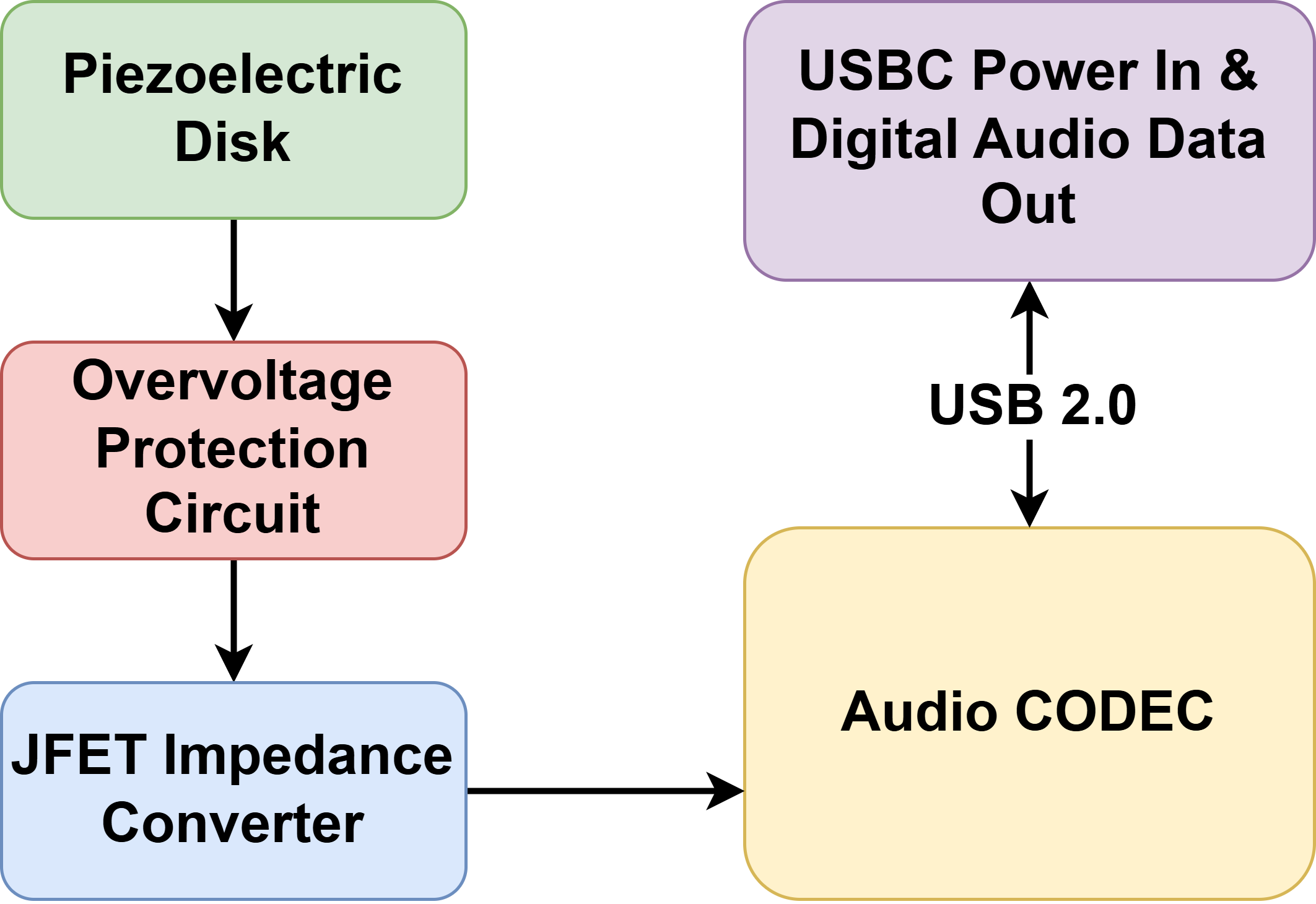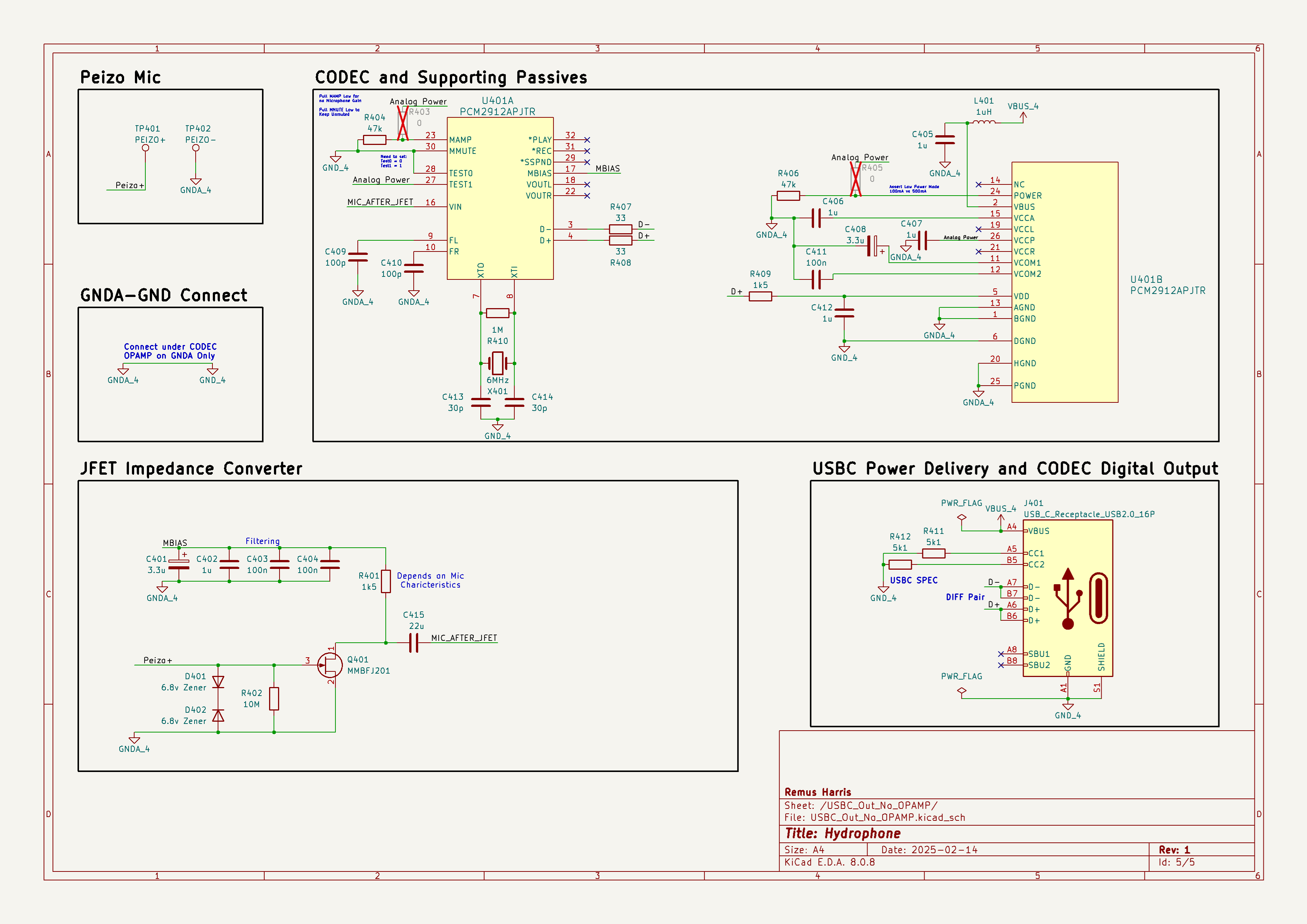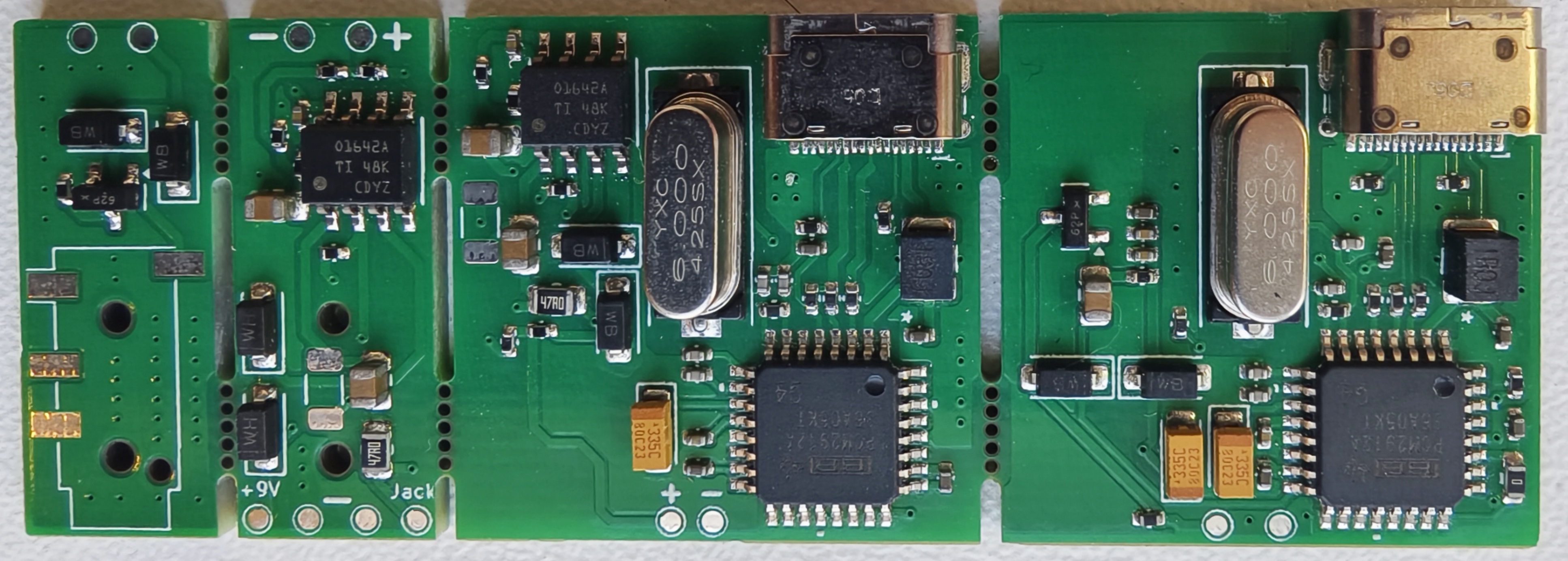Hydrophone Preamplifiers



Overview
These are hydrophone preamplifiers I developed for underwater research. The primary challenge of this project was the tight timeframe. I had just a weekend to design them and limited prior experience with analog circuits. To maximize the chances of success, I created four independent designs, ensuring that at least one would function as intended.
- Two digital-based designs: One utilizing an op-amp, the other a JFET impedance converter circuit.
- Two fully analog designs utilizing the same principles.
Signal Integrity and Digital Conversion
A key concern in audio designs is signal integrity over long cable runs, where outside interference can degrade audio quality. To mitigate this, I incorporated a CODEC after the op-amp/JFET, converting the hydrophone’s analog signal into a digital format. The board then outputs the digitized signal through USB-C, allowing transmission to any USB-enabled device.
Accessibility and Cost Reduction
My goal was to develop an affordable and accessible hydrophone solution. Most hydrophones are designed for audio professionals, requiring expensive equipment such as balanced XLR connections and high-end recorders. Meanwhile, lower-cost hydrophones rely on 3.5mm unbalanced audio cables, which are highly susceptible to noise.
By integrating a CODEC and USB-C interface, I created a universal microphone solution that dramatically lowers the cost barrier, making hydrophones accessible to anyone with a smartphone or computer. Additionally, because the signal is transmitted digitally, it remains interference-free even over long cable runs, overcoming the inductive noise issues that render many high-end hydrophones ineffective in environments with electrical interference, such as those caused by aquarium pumps.
Results and Performance Testing
After testing all four designs, the digital JFET impedance converter circuit performed the best, producing the most accurate recordings. Both of the pure analog designs suffered from significant noise, which I suspect is due to external electrical interference. Meanwhile, the digital op-amp design introduced noticeable sound distortion, though the exact cause remains unclear.
Key Features
- Digital signal conversion via an onboard CODEC.
- USB-C output, enabling direct connection to modern devices.
- Improved signal integrity, preventing noise interference over long cable runs.
- Cost-effective hydrophone solution, eliminating the need for expensive XLR-based setups.
- Increased accessibility, allowing anyone with a smartphone or computer to use high-quality hydrophones.
This project tested my ability to rapidly design under pressure, work with analog and digital signal processing, and create practical, low-cost solutions for specialized applications.